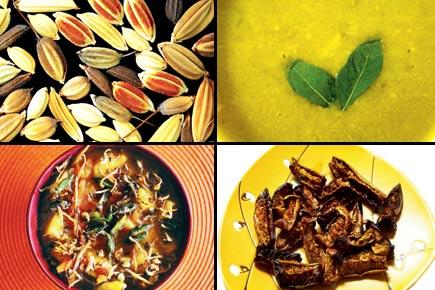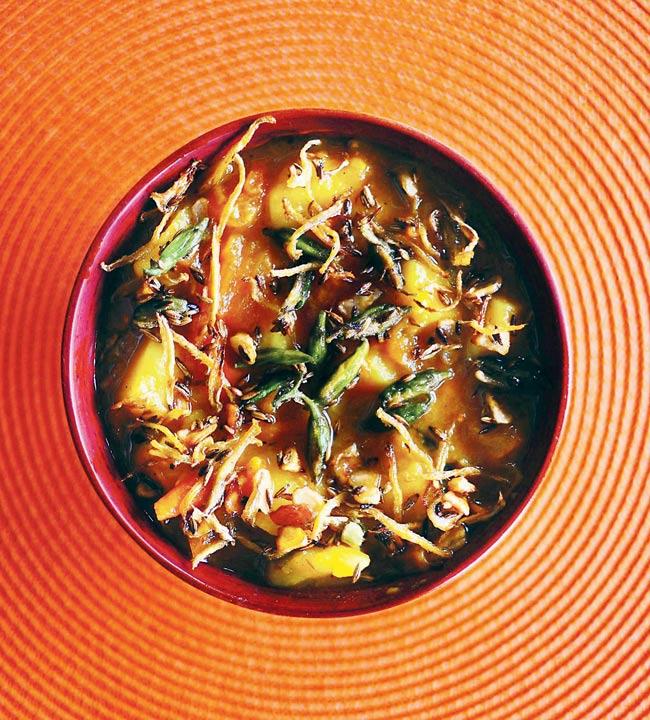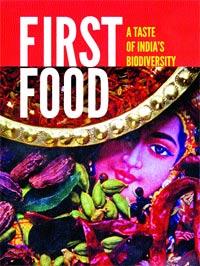A new title about India’s culinary practices, First Food: A Taste of India’s Biodiversity, takes you on a discovery about India’s lesser-known foods. As a part of this trail, the guide culls out three precious recipes of Maharashtra

Maharashtra, Pivala, Selni, Velu Satye, First Food: A Taste of Indiau00e2u0080u0099s Biodiversity, books, recipe
Kachnar
In north India, buds of kachnar are used to make a delicious curried vegetable dish. Also, found in Sri Lanka, kachnar has three varieties — red, white and mauve — depending upon the colour of its flowers.

ADVERTISEMENT
The plant is called phalgu in Sanskrit. In Gujarat and Maharashtra, it is known as asundro and pivala, respectively; Bengalis have lovingly named it kanchan. In Andhra Pradesh, it is known as adavimandaramu and in other parts of south India, it is called esamaduga, kanchini or tiruvatti.
Kachnar flowers look like orchids, giving the plant the sobriquet of an ornamental tree. Kachnar or Bauhinia variegata belongs to the Leguminosae family which has pulses, beans and pea. The tree is native to souheastern Asia.
Ayurvedic practitioners use the plant’s powdered bark as tonic and against skin diseases. The roots are used as (an) antidote to snake poison. Research has shown that some compounds in the roots have anti-inflammatory activity. The bark protects the liver and the stem seems to protect the kidneys.
Excerpts and images courtesy: First Food: A Taste of India’s Biodiversity
Kachnar aur Aloo ki Tarkari
Ingredients
For cooking the kachnar buds
>> 1 tbsp ghee
>> 1 tsp cumin
>> Pinch of asafoetida
>> Pinch of ginger powder
For the dish
>> 4 chopped tomatoes
>> 1/2 kg boiled potatoes
>> 1 bowl Kachnar buds
>> 1/2 tsp turmeric
>> 1/2 tsp sugar
>> Salt to taste
Method
>> Boil water and soak the buds for few minutes. Heat the ghee and add the condiments. After frying it for five minutes, put the buds in the pan and sauté it to get the cooked buds.
>> In a different pan, sauté tomatoes with turmeric powder for two minutes. Add potatoes. Sauté for 10 minutes. Then add the cooked buds, sugar and salt.
>> Add three cups of water to the mixture. Cook for five minutes and serve.
Velu Satye
One of the great acumen of those living close to nature is that they know exactly when nature offers a gift. Soon after the first shower in the month of Shravana, between July and August, tribal women along the hilly border of Maharashtra and Chhattisgarh set out for long walks in the thick forests, poking around the roots of bamboo clumps. They look for palm-sized, white, flower-like mushrooms that would have popped up the previous night.

Velu Satye, as the bamboo mushroom (Dictyophora) is called in the Gondi language, is highly perishable. It has to be plucked before noon and cooked within seven to eight hours of plucking, said Desirbai Ghatghoomar of Tembli village in Gadchiroli district of Maharashtra.
Of late, the musty, earthy smell of the mushroom has become a favourite among urban gourmets but they use only the flesh caps and discard the hard fibre stalks which have the same flavour and nutrition. Tribal women know the value of these stalks and cut them into strips, carefully dry them in fitful sunshine and save to make aaran (soup) in winter.
Aaran
Ingredients
For the soup
>> 100 gm dried velu satye stems
>> Dry mango flakes or powder to taste
>> 1 chopped large onion
>> 1 tsp ginger garlic paste
>> 5 slit green chillies
>> Salt to taste
>> A pinch of turmeric powder
For seasoning
>> 1 tsp oil
>> A pinch of mustard seeds
>> A pinch of cumin seeds
>> 2-3 red chillies
>> 10-12 curry leaves
>> Chopped coriander leaves
Method
>> Pound the dried mushroom stems with a stone or a wooden pestle till reduced to powder.
>> Sieve the powder and pound the large particles again till fine. Pour some water in a pan and add the powder. Keep stirring to avoid lumps.
>> Add more water to attain the desired consistency as soup will thicken on cooking. Put the pan on flame. Add salt and turmeric and bring it to boil.
>> Add finely chopped onion, ginger-garlic paste, mango flakes and green chillies. Simmer till onion and mango flakes are soft and the ingredients are well blended.
>> Keep stirring intermittently. You can fry onion and ginger-garlic paste in a little oil before adding to the soup. Sprinkle coriander leaves and serve hot. Add seasoning if required.
Selni
Think of a farmer hoeing or weeding in the sun for hours. He is hungry and thirsty but does not want to stop for refreshment.

He reaches for the small, pale peach-coloured cucumber-like fruits, growing wild on the farm boundary. The flesh is bland with a hint of sweetness, but its intense aroma, resembling that of ripe muskmelon, soothes him. The fruit is what one needs to satisfy the cravings.
Till about 20 years ago, the wild fruit (Cucumis callosus), known as selni in Maharashtra, kachra in the tribal areas of Madhya Pradesh and demu or pehta in Chhattisgarh, was a regular feature of farm life in central India. The thin, trailing vines, resembling that of bitter gourd, were found virtually everywhere in farms, yards and on household fences...
When raw, the fruits are used for making chutney. The half-ripe fruit is cut, sundried and stored in a dried form, called selni khula. In the summer, when vegetables are rare, slices of crispy, fried selni make a delicious addition to monotonous meals. However, the fruit is disappearing from farms, thanks to the chemical overload and manicure-perfect weeding necessitated by commercial crops.
Selni Khula
Ingredients
>> 1 kg half-ripe selni
>> 250 ml sour curd
>> Salt to taste
>> Oil for frying
Method
>> Wash the fruit and wipe it dry. Slice each into four vertical sections, and sun dry for four to five hours.
>> Beat curd and salt in a large utensil, add the slices and mix. Leave overnight.
>> Next morning, take the pieces out of the curd and spread out on a plate under the sun. Reserve the leftover curd. Put the slices back into it in the evening.
>> Repeat the process for three days, by when the slices would absorb the entire curd. Sun dry them for a few more days. Store in a jar.
>> For serving, heat oil in a pan, add a handful of selni khula and stir fry till crisp. The pieces will swell and change shape. Keep stirring to avoid burning. It takes a minute to be done. Serve to enliven simple meals.

First Food: A Taste of India’s Biodiversity, Vibha Varshney and Sunita Narain, Centre for Science and Environment, r950. Available at cseindia.org and amazon.in
About the book
The book is a rare collection of 100 recipes that are now tucked as culinary secrets in the hinterland of India. From Makhanas to Amlas, and to the lesser-heard-of Gahat dal, Gongaru and Paan leaves — the book is a precious ode to simple farm kitchens as well as a warning against losing precious recipes. It looks at biodiversity that helps maintain India’s ecological balance.
Compiled by Kanika Sharma
 Subscribe today by clicking the link and stay updated with the latest news!" Click here!
Subscribe today by clicking the link and stay updated with the latest news!" Click here!







